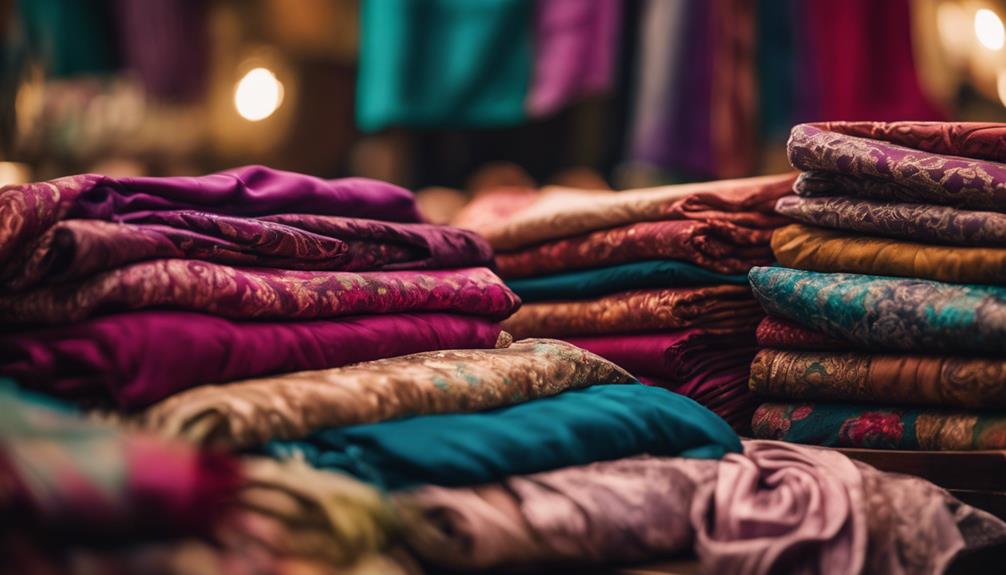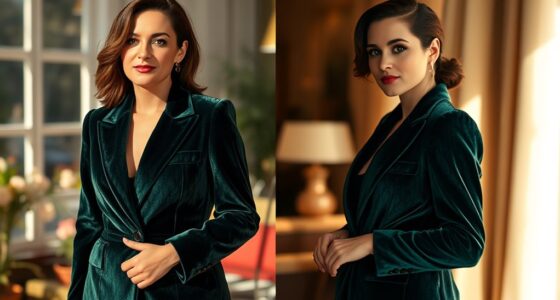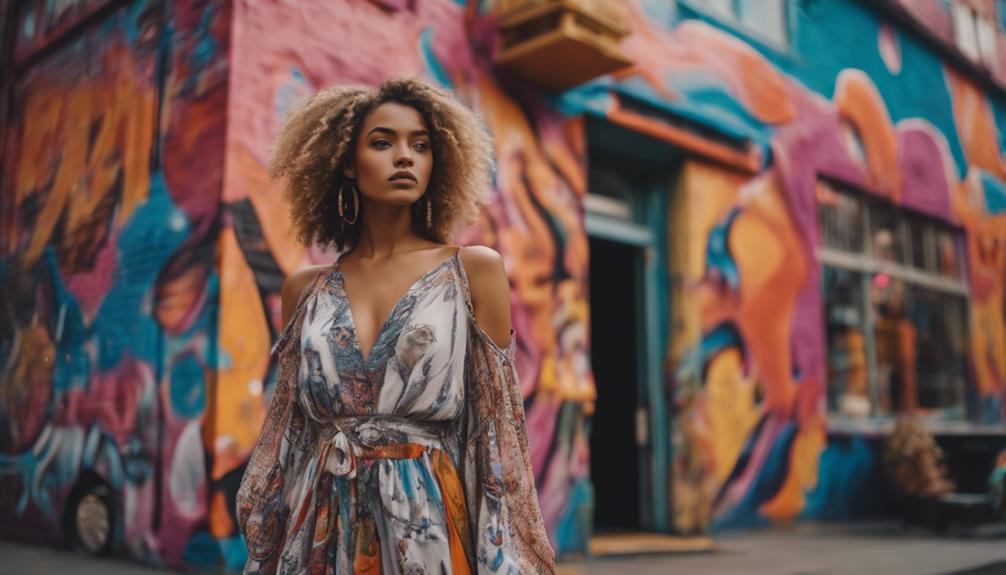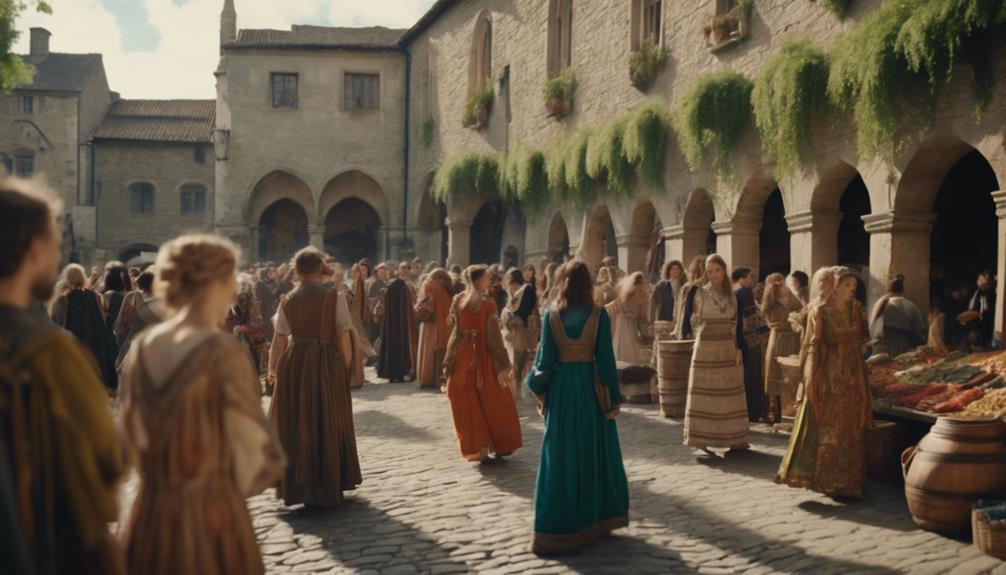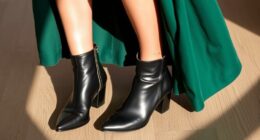Fast fashion revolutionizes your wardrobe with up-to-date styles at affordable prices, however, there is a concerning aspect that must be considered. It results in significant waste, as the industry produces approximately 92 million tons annually. The garments you purchase are frequently crafted from synthetic materials, adding to pollution and ecological damage. Social media fuels spontaneous purchases, fostering a cycle of excessive consumption. Nevertheless, there is a growing movement towards sustainable fashion, promoting mindful consumption. By recognizing these challenges, you can make more informed decisions. Stay tuned to find out how you can maintain a fashionable wardrobe while advocating for ethical practices!
Key Takeaways
- Fast fashion emerged in the 1990s, driven by youth subcultures like grunge, promoting rapid adoption of diverse styles.
- The industry generates approximately 92 million tons of waste annually, highlighting its significant environmental impact.
- Over 80% of clothing is made from synthetic materials, leading to water pollution and short-term use culture.
- Social media amplifies impulsive buying behaviors, contributing to the cycle of overconsumption and unrealistic beauty standards.
Origin and historical background of the fashion trend/style
When you think about the origins of fast fashion, you can't ignore the influence of the 1990s, especially the rise of grunge music and subculture.
This era challenged traditional fashion norms and embraced a more casual, eclectic style that resonated with many consumers.
Brands quickly adapted to these changing tastes, paving the way for the rapid production cycles we see today.
Trends From the 1990S
The 1990s fashion trend blends grunge, hip-hop influences, and minimalist styles, capturing the essence of youth rebellion and cultural shifts during the decade. As you explore this era, you'll notice how fast fashion amplified these styles, making them accessible to a broader audience.
Celebrities and films showcased oversized flannel shirts, crop tops, and baggy jeans, all emblematic of the youth culture that defined the time. Streetwear brands like Tommy Hilfiger and Polo Ralph Lauren emerged, emphasizing logo-centric designs that resonated with young consumers.
The eclectic mix of materials—denim, leather, vibrant colors, and bold patterns—further characterized the decade's fashion landscape. You might recall the influence of iconic supermodels and the role of music videos and MTV, which played a significant part in solidifying these trends.
As you investigate the 90s, it's clear that fast fashion was a driving force behind the rapid adoption of these styles, allowing you to embrace the rebellious spirit of the time while still reflecting your individuality. The 1990s truly set the stage for the fast-paced evolution of fashion we see today.
Grunge Music and Subculture
Emerging from the vibrant music scene of the mid-1980s in Seattle, grunge music not only defined a sound but also sparked a distinctive subculture that greatly influenced fashion trends in the early 1990s. This genre, which fused punk rock and heavy metal, was characterized by raw sound and anti-establishment themes that resonated with disaffected youth.
Bands like Nirvana and Pearl Jam popularized grunge fashion, showcasing a disheveled look that included flannel shirts, ripped jeans, and combat boots. This style reflected a clear rejection of mainstream fashion.
The DIY ethic of the punk scene played an essential role in shaping grunge aesthetics, encouraging individuals to mix thrift store finds and vintage clothing. This approach led to the rise of casual, laid-back styles that became staples for young people during this era.
Key Characteristics
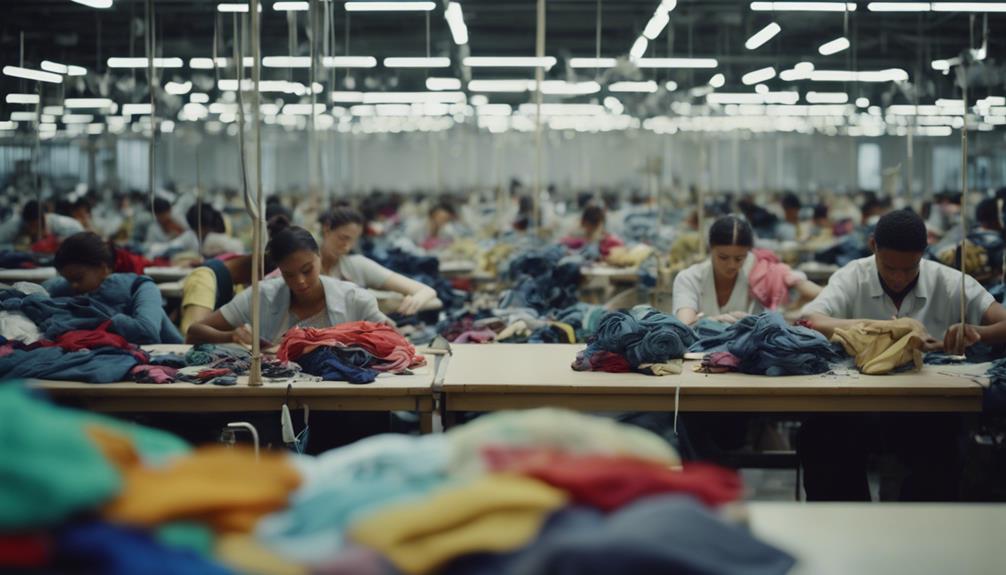
When you look at fast fashion, you'll notice its rapid trend cycles that keep you constantly chasing the latest styles.
You'll also see how synthetic fabrics and vibrant pastel hues dominate the scene, making everything look fresh and appealing.
Plus, vintage graphic tees have become a staple, blending nostalgia with modern trends in a way that captivates consumers like you.
Fast Fashion's Rapid Trend Cycles
Fast fashion thrives on rapid trend cycles, launching new collections multiple times a season to keep you constantly shopping. This model capitalizes on your desire for the latest styles, pushing you to buy more than ever before. In fact, you might be buying 60% more clothing now than you did just 15 years ago, yet each piece ends up in your closet for only half as long. The result? A staggering 92 million tons of waste generated annually by the fashion industry.
Fast fashion retailers employ low-cost materials and labor to maintain appealing prices, encouraging you to discard items quickly instead of investing in quality. The constant churn of styles, fueled by social media and influencer marketing, amplifies the pressure you feel to stay fashionable.
With trends changing at lightning speed, you may find yourself caught in a cycle of consumption that prioritizes quantity over quality. This rapid pace not only impacts your wallet but also contributes to a growing environmental crisis. In the world of fast fashion, the thrill of newness often overshadows the long-term consequences of our shopping habits.
Synthetic Fabrics and Pastel Hues
The trend of synthetic fabrics in pastel hues perfectly encapsulates the fast fashion model, as these materials allow brands to produce eye-catching items at low costs while appealing to your desire for the latest styles.
With over 80% of clothing made from plastic derivatives like polyester and nylon, it's clear that synthetic fabrics dominate the industry. These fabrics mimic natural fibers but come with significant environmental downsides.
Pastel colors have taken over social media, driving rapid consumer purchasing behavior. However, the production of these pastel garments often involves chemical dyes, which lead to water pollution during the dyeing process. This not only harms aquatic ecosystems but also contributes to the cycle of overconsumption and waste. Fast fashion brands design trendy items meant to be worn just a few times before being discarded, perpetuating this cycle.
As you embrace these fashionable pastel pieces, consider the hidden costs of synthetic fabrics. While they may satisfy your style cravings, the environmental impact is undeniable. Understanding this connection can empower you to make more mindful choices in your wardrobe, potentially leading to a more sustainable fashion future.
Vintage Graphic Tees
Embracing the nostalgia of past decades, vintage graphic tees stand out with their unique designs that reflect cultural trends and social movements. When you wear one, you're not just making a fashion statement; you're connecting with history. These tees often feature screen-printed images, slogans, or logos that can range from classic band graphics to iconic pop culture references, appealing to both collectors and casual wearers.
One of the key characteristics of vintage graphic tees is their quality. Made from high-quality cotton, they offer durability and comfort, unlike the lower quality found in fast fashion garments. By choosing vintage, you're also making a sustainable choice. Sourcing these tees encourages the reuse and recycling of clothing, helping to combat the environmental impact of fast fashion waste.
As you embrace this trend, consider the true cost of your clothing choices. Vintage graphic tees align with a broader shift towards ethical consumption, allowing you to express your individuality while supporting sustainable practices. In a world dominated by disposable fashion, vintage tees remind us that style can be both timeless and responsible.
Modern Interpretation
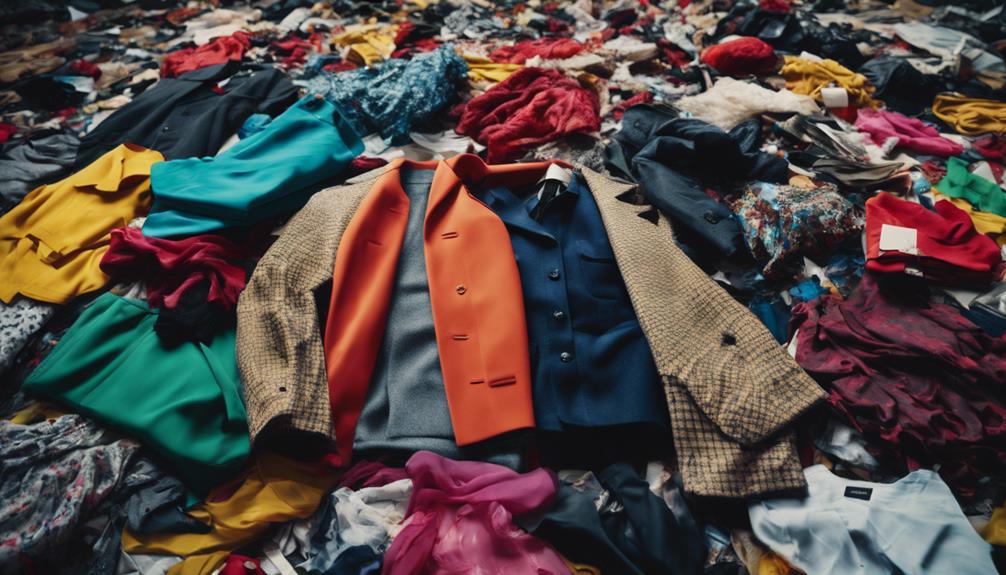
In today's fashion landscape, you can't ignore the rise of sustainable fashion innovations that challenge fast fashion norms.
Leading brands are pivoting towards more ethical practices, while social media fashion icons promote a shift in consumer habits.
You'll see how these elements are reshaping your wardrobe choices and the industry as a whole.
Sustainable Fashion Innovations
Sustainable fashion innovations revolutionize the industry by prioritizing eco-friendly materials and advanced technologies that minimize waste and promote circularity. When you make fashion choices today, you've got a range of options that are kinder to the planet. Brands are increasingly using organic cotton, recycled polyester, and biodegradable fibers, which greatly reduce environmental impact.
New technologies like 3D knitting and digital printing allow for on-demand production, cutting down on excess inventory and waste in the supply chain. Plus, transparent supply chains let you trace the origins of your clothing, giving you insight into the ethical practices behind each piece.
The rise of fashion rental services and subscription models shifts your perspective on ownership, encouraging you to prioritize access over accumulation. This approach helps curb the volume of clothing wasted and aligns with the growing movement towards sustainability.
Initiatives like the Ellen MacArthur Foundation's Circular Fibres Initiative advocate for a circular economy, emphasizing recycling and sustainable materials in garment production. By embracing these sustainable fashion innovations, you can make conscious choices that positively impact the industry and the environment.
Leading Fast Fashion Labels
Leading fast fashion labels like Brandy Melville have reshaped the industry by catering primarily to young consumers with trendy, yet often problematic, clothing options. Founded in Italy in the 1980s, Brandy Melville has expanded to 94 locations worldwide, including 36 in the U.S. as of 2024.
The brand's infamous 'one size fits most' policy, which primarily offers XS/S sizes, has sparked dissatisfaction among shoppers and fueled unhealthy body image pressures. Moreover, allegations of discriminatory hiring practices have emerged, revealing a preference for young, thin, white women, often recruiting from their customer base. This raises concerns about the workplace culture within the fashion industry.
Fast fashion brands like Brandy Melville extensively use influencer marketing and social media to engage young consumers, leading to impulsive buying and rapid clothing disposal. Additionally, the brand's reliance on cheap labor in poor working conditions mirrors broader issues in the fast fashion industry, prompting significant ethical concerns about labor rights and environmental sustainability.
As you navigate through the landscape of fast fashion, it's essential to recognize these underlying issues and their impact on both consumers and the planet.
Social Media Fashion Icons
Social media fashion icons have redefined how you perceive trends, turning influencers into powerful forces that drive impulsive buying and shape modern consumer behavior. With platforms like Instagram, these influencers showcase cheap clothing hauls, making it easy for you to fall into a cycle of rapid consumption. As you scroll through curated feeds, you might feel compelled to buy the latest styles, often without considering their long-term value.
Brands like Brandy Melville leverage influencer marketing, attracting a teenage audience with millions of followers and creating exclusivity around their cheap clothing. This approach encourages you to discard items quickly, contributing to the staggering 92 million tons of fashion waste generated every year.
The lifestyle portrayed by these fashion icons often promotes unrealistic beauty standards, which can challenge your self-image and lead to dissatisfaction. As you seek to emulate these influencers, you may find yourself trapped in a cycle of consumption that affects not just your wallet, but also the environment.
It's essential to recognize the impact of social media on your shopping habits and consider more sustainable choices in a world dominated by fast fashion.
Styling Tips

When it comes to styling, you can elevate your wardrobe with basic layering pieces that create versatile outfits.
Don't underestimate the power of trendy accessories—they can transform any look in an instant.
Plus, mastering color coordination techniques will help you put together outfits that aren't only stylish but also uniquely yours.
Basic Layering Pieces
Elevate your wardrobe with essential basic layering pieces that not only offer versatility but also promote sustainable fashion choices. Consider that fast fashion generates around 92 million tonnes of waste annually, so opting for quality layering essentials can greatly impact sustainability.
Start with fitted turtlenecks and long-sleeve tees in neutral colors. These pieces serve as versatile foundations, allowing you to mix and match effortlessly. Lightweight basics can be worn alone or layered under heavier garments, providing functionality across seasons. This approach minimizes the need for multiple, season-specific purchases, reducing your overall consumption.
Remember, investing in sustainable fabrics like organic cotton or Tencel not only supports eco-friendly practices but also guarantees comfort and durability. As you curate your wardrobe, focus on layering pieces that align with your style and values.
Trendy Accessories for Every Look
Trendy accessories can instantly transform your outfit, adding personality and flair without the need for new clothes. By incorporating items like statement earrings, bold handbags, or unique belts, you can elevate even the simplest high street looks. These accessories allow you to express your individual style while minimizing the need for constant clothing purchases.
Fast fashion brands often produce accessories at a low cost, tempting you to adopt a disposable mindset. Instead, consider investing in sustainable accessories made from eco-friendly materials. These pieces typically have a longer lifespan than clothing and can add an eco-conscious element to your wardrobe.
Mixing vintage or second-hand accessories with current trends not only promotes sustainability but also enhances your unique flair. Scour thrift shops or online marketplaces for unique finds that can stand out against mainstream high street items. Remember, the key is to create a cohesive look that reflects who you are.
Color Coordination Techniques
Mastering color coordination techniques can transform your outfit from ordinary to extraordinary, guaranteeing you make a statement with every look.
Start by using the color wheel to explore complementary colors, which create vibrant contrasts, or analogous colors for a more harmonious vibe.
Apply the 60-30-10 rule: use 60% of a dominant color, 30% of a secondary hue, and 10% for an accent. This method guarantees your ensemble remains balanced and visually appealing.
Neutral colors like black, white, gray, and beige serve as versatile bases, allowing you to mix and match with bolder shades or patterns effortlessly.
Consider seasonal palettes, too. Warmer tones like oranges and browns are perfect for fall, while cooler shades such as blues and greens fit spring and summer trends.
Additionally, don't shy away from incorporating textures and patterns; they add depth and intrigue without overwhelming your outfit.
Shopping Guide
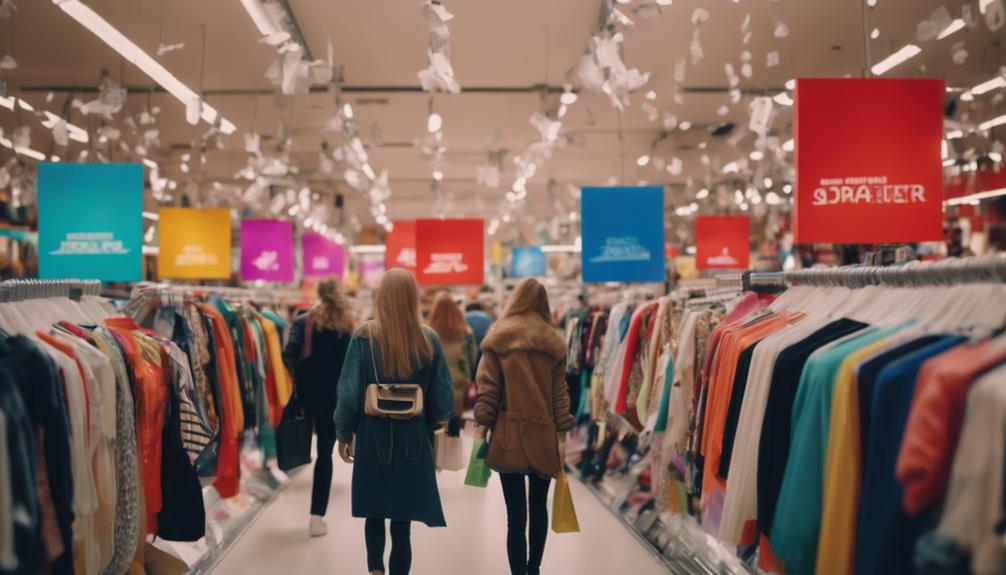
When you shop, consider the environmental impact of your choices and aim for sustainable options that align with your values. Fast fashion contributes to an estimated 92 million tons of waste globally each year, so it's essential to be mindful of where and how your clothing is made.
Prioritize quality over quantity by investing in durable, timeless pieces rather than trendy items that may quickly fall out of style.
Explore second-hand shopping options to considerably reduce your environmental footprint. Purchasing used clothing not only promotes recycling but also helps extend the lifecycle of garments.
When selecting new pieces, research the brands' labor practices and environmental policies. Ethical fashion brands prioritize fair labor rights and sustainable production methods, making them a better choice for conscious consumers.
Upcycling Old Clothing Ideas
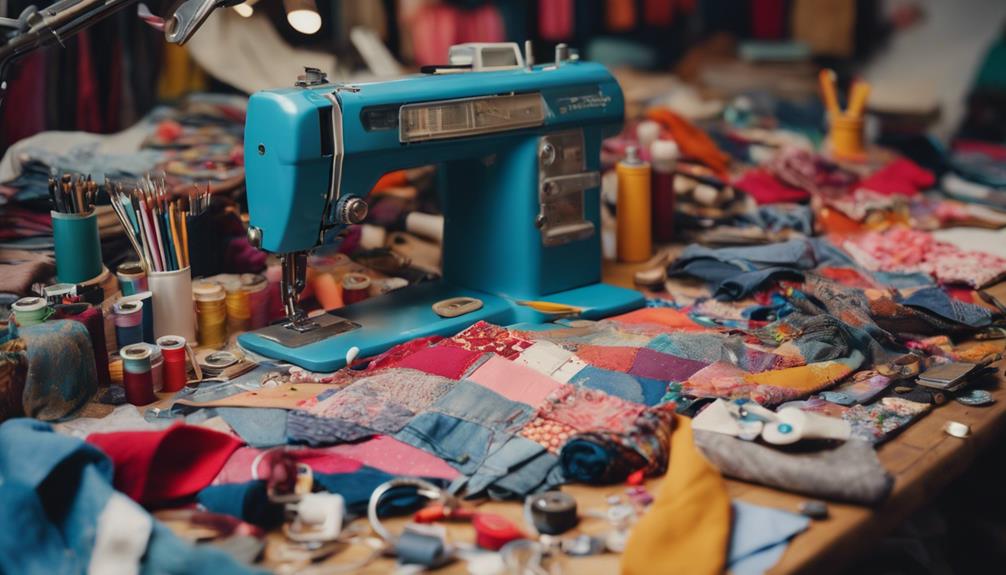
You can breathe new life into thrift store finds by repurposing them into unique pieces that reflect your style.
Plus, trying out DIY fabric paint techniques allows you to personalize and transform your old clothing into something fresh and exciting.
Let's explore how easy and fun upcycling can be!
Repurposing Thrift Store Finds
Repurposing thrift store finds can breathe new life into old clothing, transforming them into unique, stylish pieces while promoting sustainability.
By creatively upcycling, you not only reduce waste but also contribute to a cultural shift toward valuing individuality and quality in fashion. With the fashion industry generating a staggering 92 million tons of waste annually, making it one of the most polluting sectors, your efforts in repurposing thrift store finds become essential.
Consider simple techniques like sewing patches onto jeans to create a personalized look or turning oversized shirts into trendy crop tops. Vintage dresses can be reimagined as contemporary skirts, allowing you to express your style while minimizing textile waste.
The beauty of upcycling lies in its affordability; you can score thrifted pieces at a fraction of the cost of new fast fashion items.
Engaging in upcycling not only enhances your creativity but also encourages a more responsible approach to clothing consumption. By embracing this practice, you're not just revitalizing your wardrobe—you're making a statement against the disposable nature of fast fashion and supporting a more sustainable future.
DIY Fabric Paint Techniques
Transforming old clothing with DIY fabric paint techniques lets you create unique, personalized pieces that reflect your style while promoting sustainable fashion practices. This approach sheds light on the importance of reducing waste in the fashion industry. By using non-toxic fabric paints, you can guarantee your designs remain vibrant and durable through multiple washes.
Techniques like tie-dye, stenciling, and sponge painting allow you to refresh worn-out garments, encouraging your creativity while extending their lifespan. You can incorporate patterns or color blocking to breathe new life into outdated styles, emphasizing quality over quantity in your wardrobe.
Upcycling your clothing with fabric paint not only diverts textiles from landfills but also fosters a deeper appreciation for the value of garments. This process encourages you to adopt a more mindful consumer behavior, as you become more aware of the impact of fast fashion on the environment.
Cultural Impact
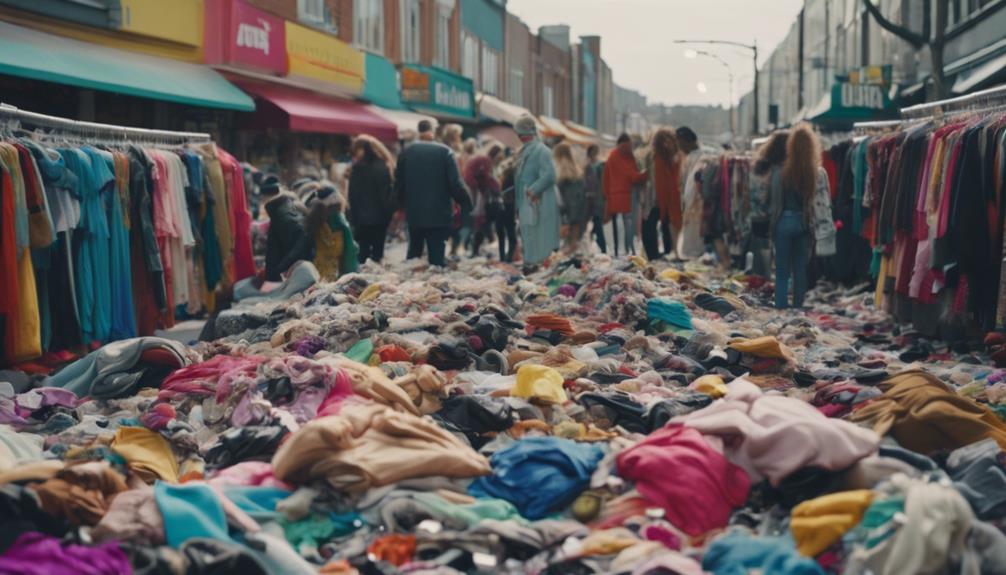
Fast fashion's influence on iconic 90s TV show fashion is hard to ignore, as it shapes what you see and want to wear today.
You might also notice how youth activism is intertwined with fashion, with young voices calling for change in the industry.
This creates a unique cultural impact that challenges norms and promotes awareness about sustainability and ethical practices.
Iconic 90S TV Show Fashion
Iconic 90s TV shows like 'Friends' and 'The Fresh Prince of Bel-Air' not only defined a generation's style but also shaped youth culture, making vibrant, casual fashion staples like oversized sweaters and high-waisted jeans essential wardrobe pieces. Set against the backdrop of New York and Los Angeles, these shows showcased a blend of urban chic and laid-back vibes, influencing how you and your friends dressed.
Characters like Rachel Green became fashion icons, sparking a surge in demand for similar looks. This phenomenon contributed to the rise of fast fashion brands that quickly replicated these styles, allowing you to easily access trendy outfits without breaking the bank. Brands like Tommy Hilfiger and Calvin Klein capitalized on this trend, turning logo-centric clothing into symbols of status.
The 90s fashion impact didn't stop at clothing; it also popularized thrift shopping and vintage aesthetics, creating a counter-movement to fast fashion. The blending of casual and formal wear led to the 'athleisure' trend, which remains relevant today.
Ultimately, the cultural footprint of 90s TV fashion continues to resonate in your wardrobe choices, proving the lasting influence of that vibrant era.
Youth Activism and Fashion
As young activists raise awareness about the environmental and ethical issues tied to fast fashion, they're driving a cultural shift towards sustainability in the fashion industry.
You've likely seen your peers using social media to challenge fast fashion brands. Platforms like Instagram and TikTok amplify their voices, promoting alternatives such as thrift shopping and sustainable fashion. This movement isn't just a trend; it's a necessary response to the alarming impact of rapid consumption.
Documentaries like 'The True Cost' and 'RiverBlue' have sparked vital discussions among young audiences, revealing the hidden costs of fast fashion. With movements like Fridays for Future, young activists highlight the connection between climate issues and the fashion industry, urging brands to adopt sustainable practices.
You might find yourself inspired by these campaigns, encouraging you to rethink how you make clothes and consider the materials and methods used. By valuing quality over quantity, you're participating in a larger cultural shift.
Every time you choose sustainable options or share information with peers, you're contributing to a more ethical fashion landscape. Your choices matter, and together, you can help reshape the future of fashion.
Frequently Asked Questions
What Is the Dark Truth of Fast Fashion?
The dark truth of fast fashion reveals exploitation and environmental harm. You're supporting an industry that prioritizes profit over ethical labor practices, leading to waste, pollution, and poor working conditions for countless individuals around the globe.
What Is the Brandy Melville Documentary About?
The Brandy Melville documentary reveals the brand's controversial sizing and hiring practices, exposing toxic workplace culture and its connection to fast fashion. It urges you to reconsider your choices and the ethical impact of your purchases.
What Is the Message of the True Cost Documentary?
The message of "The True Cost" documentary urges you to recognize the environmental and social consequences of your clothing choices. It challenges you to reconsider consumer habits and encourages supporting sustainable, ethical fashion practices for a better future.
What Is the Sad Truth About Fast Fashion?
The sad truth about fast fashion is that it exploits cheap labor, generates massive waste, and harms the environment. You might find yourself contributing to this cycle without realizing the real cost of your choices.
How Does Fast Fashion Impact Modern Fashion Trends?
Fast fashion has a significant impact on modern fashion looks for wardrobe. It promotes the quick turnover of clothing styles, leading to more frequent trend changes. This can result in ethical and environmental concerns due to the high volume of clothing production and waste.
Conclusion
To sum up, understanding fast fashion's origins and characteristics helps you make informed choices about your wardrobe.
By embracing modern interpretations and styling tips, you can express your unique style while being mindful of the impact your choices have on the environment.
Don't forget to explore upcycling ideas to breathe new life into old clothes.
Together, we can challenge the fast fashion cycle and foster a more sustainable and culturally aware approach to fashion.

